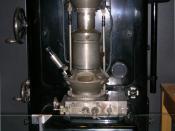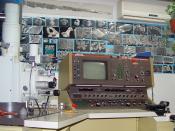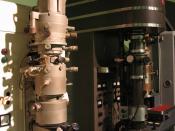Electron Microscopes
Electron Microscopes (EMs) are scientific instruments that use a ray of electrons to examine small matter on a very fine scale. They are extremely useful, as they can produce the following information;
*Topography; this is how the surface appears, for example the texture.
*Morphology; this is the shape and size of the particles that make up the matter.
*Composition; this is the elements and the compounds the matter is composed of.
*Crystallographic Information; this is how the atoms are arranged in the matter.
Where did Electron Microscopes Originate from?
Electron Microscopes were invented because of the limitations of Light Microscopes, which had a smaller magnification level. Two scientists named Max Knoll and Ernst Ruska from Germany in 1930, decided to develop The Transmission Electron Microscope (TEM) as there was a greater desire to see finer details of interior structures. They used a beam of electrons instead of light so that it aloud them to see more easily through the specimen.
But the Scanning Electron Microscope (SEM) first came around in 1942, it was developed late because of the electronics involved in "scanning" the ray of electrons that passed the specimen.
How do Electron Microscopes work?
Electron Microscopes function with a focused beam of electrons instead of light to create an image of the specimen and to obtain information about its structure, texture and composition. They follow this basic step pattern;
*A beam of electrons are formed and are accelerated towards the specimen using a positive electrical potential.
*Then, with metal apertures and magnetic lenses, this beam is restricted into a fine monochromatic beam.
*With magnetic lenses, it is then focused on to the specimen.
*Inside the sample, interactions occur and affect the electron beam.
Transmission Electron Microscopes
A Transmission Electron Microscope (TEM) transmits a beam of light through...



"Electron Microscopes"
In the very beginning you spelled 'allowed' as 'aloud.' That was the only error I believe I found. A pretty good essay though, covering and saying what an electron microscope is and how it works. Well-done.
4 out of 4 people found this comment useful.